Knee bone connected to the…?

Josephine Baker dances the Charleston
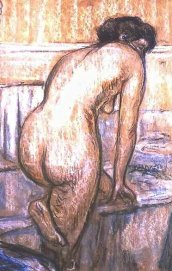
The knee bone is "connected"
to the gluteus medius
Can you sing "Dem Dry Bones"? If you don't know the spiritual by name, I bet you can intone at least some of the lyrics:
…the foot bone's connected to the leg bone, the leg bone's connected to the knee bone, the knee bone's connected to the thigh bone...
Beyond the direct structural connection between the "knee bone," or patella, and the "thigh bone," or femur, is another connection that will be of particular interest to athletes and other individuals afflicted with or susceptible to patellar femoral pain syndrome (PFPS), a disorder often referred to as "runner's knee." And this is the connection between the knee and the gluteus medius, the muscles situated above and toward the outer sides of the much larger gluteus maximus muscles.
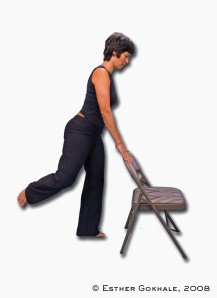
How to locate the gluteus medius
If you read my Samba Your Way to Beautiful Glutes post or joined my Samba webinar in November, you'll know how to locate these paired muscles, and you'll appreciate at least some of what they do. (If you'd benefit from a refresher, click and scroll through the Samba post, where you'll find a 6-point list.)
Gluteus medius muscles, pelvic anteversion, and knee health
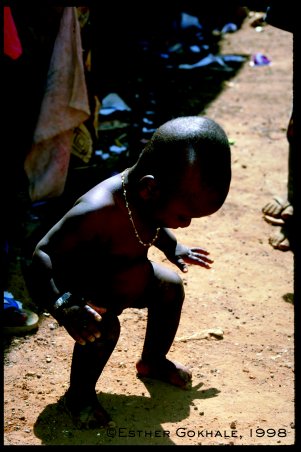
This Burkina baby was patterned to
externally rotate his legs as he was
carried on his mother's back
According to modern conventional wisdom, it's considered normal for young children to have inward-turning knees, which are expected to straighten out by about age 7. What I've observed in village Africa and other nonindustrial cultures is that because children are carried on their caregivers' hips and backs, children's legs are externally rotated from the very youngest ages.
In contrast, in the US and other modern industrial cultures, the internal rotation of the legs is often maintained into adulthood.
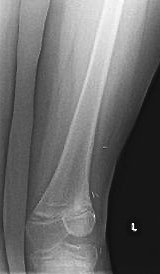 Internally rotated legs
Internally rotated legs
are common in modern
industrial cultures, even
in adulthood
Because the gluteus medius muscles are external leg rotators, strengthening these muscles can counter internal leg rotation, helping the kneecaps to align and track better. (To check the tracking of your patella, sit down, place your palm over one of your knees, and then flex your leg to feel and follow the triangular kneecap glide up and down along the end of your femur.) Strong gluteus medius muscles are important because people whose "glute mēds" are underdeveloped are at increased risk of knee and other lower-limb injuries, including patellafemoral pain syndrome. Preventing PFPS, or managing its painful symptoms if the problem has already occurred, are just a couple of reasons why--when you stand, walk, and run--you want to use your glute meds and externally rotate your legs.

In addition to promoting knee health, external leg rotation
also facilitates an anteverted pelvic position and a
well-stacked spine
Gluteal muscle activity and patellofemoral pain syndrome (PFPS)
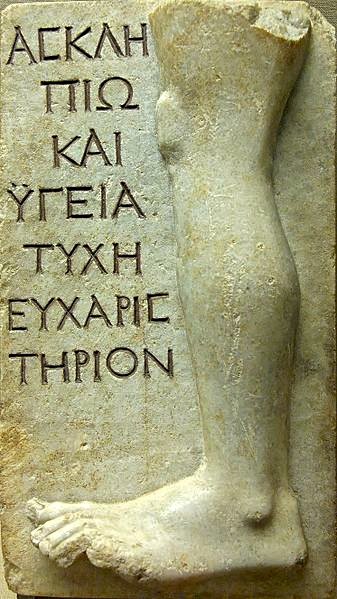
Knee pain is nothing new; this Greek votive
relief for the cure of an injured knee
dates back to 100-200 AD
If you've ever felt a dull, aching pain under or around your kneecap where it connects with the lower end of your femur, you may have experienced patellar femoral pain, especially if the pain occurred when you were sitting for a long stretch of time with your knees bent, or you were kneeling, squatting, or walking up or down stairs.
And, if you have been diagnosed with PFPS, you're not alone. Gluteal Muscle Activity and Patellofemoral Pain Syndrome--A Systematic Review, which was published earlier this year in the British Journal of Sports Medicine, confirms the connection between the knee and the gluteus medius. By synthesizing electromyography (EMG) measurements of the gluteus medius muscles during a range of functional tasks as reported in 10 case-controlled studies, all of which evaluated EMG activity of the gluteus medius, the authors strove to elucidate the relationship between gluteal muscle activity and PFPS. Among their observations and conclusions:
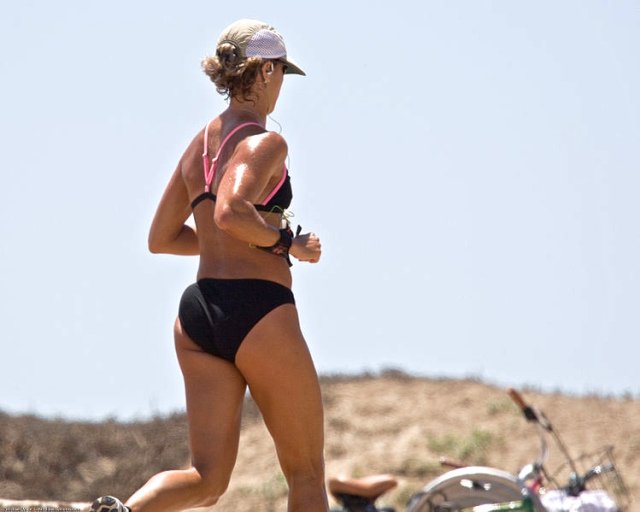
In a nutshell, if you have good strength in your gluteus medius
muscles, your knees will be in better shape.
- Patellofemoral pain syndrome is one of the most common presentations to sports medicine practitioners; of 2500 presentations to sports medicine clinics 25% of all injuries were PFPS
- Individuals with PFPS exhibit reduced gluteus medius and gluteus maximus muscle strength
- Growing evidence supports the efficacy of gluteal muscle strengthening for PFPS and gluteal-muscle strengthening programs have been associated with positive clinical outcomes
Walking is connected to healthy knees
Walking is something most of us do a lot, although according to the 2010 study Pedometer-Measured Physical Activity and Health Behaviors in US Adults, the 5,117 steps Americans typically take each day are not enough--and in fact represent thousands fewer steps than those taken by our counterparts in Australia (9,695 steps), Switzerland (9,650 steps), and Japan (7,168 steps). But even if we step just 5,000 times a day, if we engage our gluteus medius muscles with each step, that's still a lot of repetitions to help "re-architecture" our legs and minimize the risk of PFPS.
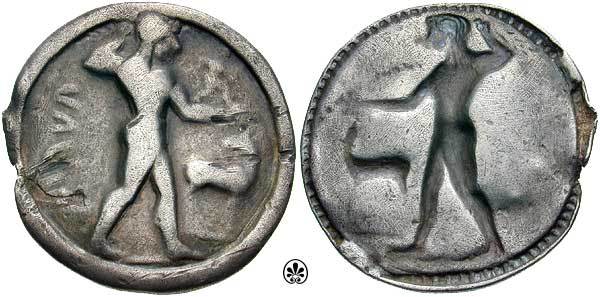
Ancient Greek coin features Apollo (with anteverted pelvis!
The pelvis serves as our postural foundation, and one of the keystones for healthy postures is to allow the pelvis to be anteverted. When your pelvis is anteverted and your "behind is out behind you," then the whole pack of muscles that includes the hamstrings, the gluteus maximus, and the gluteus medias can work to advantage, strengthening themselves, inducing circulation in the appropriate places, and bearing stress.
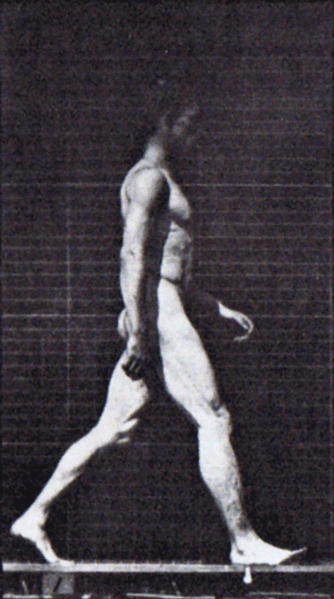
Eadweard Muybridge's 'human male walking'
demonstrates strong gluteal action
in the rear leg
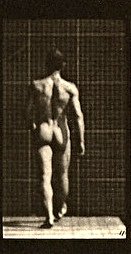
This rear view of the
subject above shows his
healthy external leg
rotation
Beyond this, the relationship between external leg rotation, pelvic anteversion, and the action of the gluteus medius is cyclic. In order for the gluteus medius to be in a position of mechanical advantage, some degree of pelvic anteversion is required. And, if we are to believe the observations summarized in the British Journal of Sports Medicine review, strong gluteus medius action relates to a diminished risk of PFPS.
The interconnectedness between external leg rotation, pelvic anteversion, and strong gluteus medius action is beautifully illustrated in the detail of Muybridge's "animal locomotion" photo and "film" to the right.
"Dem Dry Bones"
Bottom line, the knee bone is connected to the thigh bone, but it's also connected to the gluteus medius, and this is a fairly direct connection because these paired muscles externally rotate the legs. Finally--not just because the lyrics are right on point with this lesson, but because he plays and sings so artfully and with such a great sense of fun--I hope you'll listen to Fats Waller's wonderful take on "Dem Dry Bones."
Join us in an upcoming Free Workshop (online or in person).
Find a Foundations Course in your area to get the full training on the Gokhale Method!
We also offer in person or online Initial Consultations with any of our qualified Gokhale Method teachers.
Image Credits: Josephine Baker Dances the Charleston, Wikimedia Commons; The Bath, Charles Degas, Wikimedia Commons, Public Domain; How to Locate the Gluteus Medius, Esther Gokhale; X-ray of "Knock Knee," Biomed Central, Wikipedia; The Spinal Cord, Bruce Blaus, Wikimedia Commons; Greek Votive Relief Knee Injury, Marie-Lan Nguyen, Blacas Collection, Wikimedia Commons; Female Jogger, Mike Baird, Creative Commons; Human Male Walking (animation), Eadweard Muybridge, Wikimedia Commons; Animal Locomotion, Eadward Muybridge, Wikimedia Commons; AncientGreek Coin: Classical Numismatic Group, Inc, Wikimedia Commons

Comments
Thanks for the valuable post.
Thanks for the valuable post. Since the knee's not a muscle, what's the other part of the "paired muscles"?
Can you offer any tips for "waking up" our awareness of the GM or for engaging it in our walking?
thank you :)
Hello, and thanks for this
Hello, and thanks for this interesting post.
Esther, could you please comment further on the subject in the "human male walking" film? Specifically, because I assume it's probably hard to find images that are ideal in all their aspects, I'm wondering:
1) In relation to visually assessing the distinction between an excessively swayed low back and simply keeping one's behind behind, could you comment on this fellow's low back?
2) His entire body rises and falls noticeable with each step. Do you consider this natural and appropriate?
Thanks so much.
~~Laura Key
Thank you very much for the
Thank you very much for the answer!
The position of the feet I was talking about is like shown in this picture:
http://www.wutang.org/images/articles/mabu_mabustance_fig2and3.gif
This is the usual guidelines for the Ma Bu stance. However, I think the most spontaneous way is letting the feet point outwards (like fig. 2) instead of pointing forward (fig. 3).
Could you comment if you think this recomendation (both feet pointing forward) is healthy?
I wish a great new year! I love your work.
IS there a way to correct
IS there a way to correct deeply inward pointing knees at 54 years old? My mother's knees pointed in too . . . THANK YOU!
Add New Comment
Login to add commment
Login